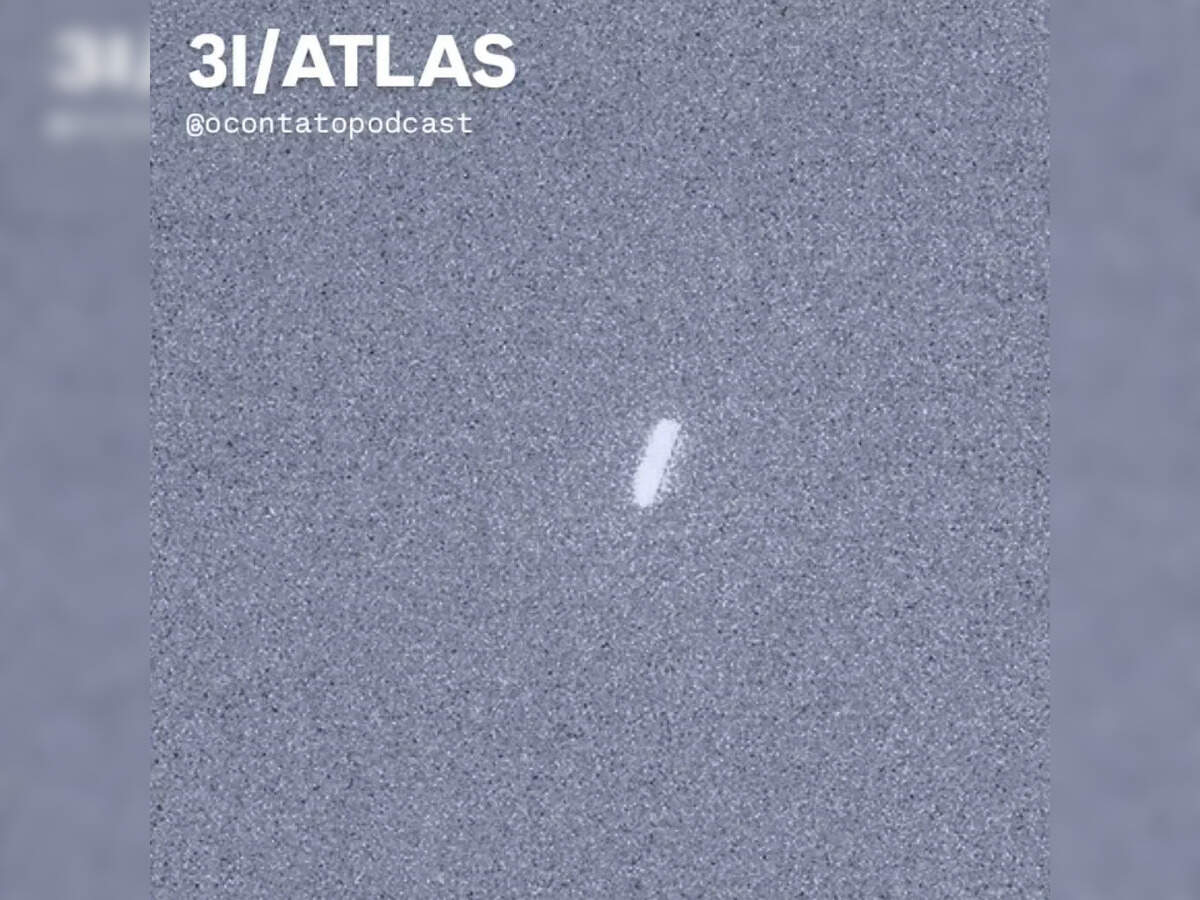Science
Scientists Uncover Surprising Nickel Emissions from 3I/ATLAS

Recent observations of the interstellar object 3I/ATLAS have revealed unexpected chemical emissions, drawing significant attention from the scientific community. Detected in July 2025 by the Asteroid Terrestrial-impact Last Alert System (ATLAS), this object has presented anomalies that challenge existing models of cometary behavior, particularly the presence of nickel vapor at great distances from the Sun.
3I/ATLAS: Discovery and NASA’s Monitoring Efforts
3I/ATLAS, comparable in size to Manhattan, became the third confirmed interstellar object following ‘Oumuamua and Borisov. Since its discovery, NASA has conducted internal monitoring through the International Asteroid Warning Network (IAWN), although it has not issued any public statements regarding the object. Reports indicate that NASA activated planetary defense systems as 3I/ATLAS exhibited unexplained acceleration and a peculiar anti-tail pointing toward the Sun.
Unusual Chemical Findings
The most striking finding emerged from observations made with the Very Large Telescope (VLT) in Chile, where scientists detected nickel vapor in the gas cloud surrounding the object. Typically, metals such as nickel do not vaporize under the frigid conditions found in space. Further analysis indicated the presence of nickel tetracarbonyl, a compound usually associated with industrial manufacturing, raising questions about its origin.
In addition to the unusual nickel emissions, data from the James Webb Space Telescope revealed a gas envelope around the object containing significantly more carbon dioxide than water, a feature not commonly seen in typical comets within our solar system.
Warnings from the Scientific Community
Harvard astrophysicist Avi Loeb has termed 3I/ATLAS a potential “black swan event,” suggesting it could represent a rare cosmic phenomenon with profound implications. He posits that the object might even be of artificial origin, which could suggest it is an alien probe. Loeb estimates that 3I/ATLAS could weigh around 33 billion tons, significantly more massive than any previously identified interstellar object. He emphasized that the acceleration and directional changes observed cannot be solely attributed to gravitational forces.
Loeb likened the object to a “Trojan horse,” implying that while it may appear natural, it could potentially be concealing advanced technology.
Observations and Anomalies
Additional data collected from the Hubble Space Telescope and various ground-based observatories have shown a diffuse coma of gas and dust forming around 3I/ATLAS. The early development of a tail suggests the sublimation of volatile ices as it approaches the Sun. Spectroscopic analyses have indicated high carbon dioxide levels compared to water and the presence of heavier isotopes, hinting at an origin in an extremely cold environment outside our solar system.
These findings imply that the materials constituting 3I/ATLAS may have formed billions of years ago, long before entering our solar system.
Upcoming Closest Approach and Future Monitoring
3I/ATLAS is expected to make its closest approach to the Sun on October 29, 2025, at which point it will still be approximately 268 million kilometers from Earth, posing no immediate threat. As it nears the Sun, scientists anticipate changes in its behavior, possibly resulting in increased activity and new chemical emissions.
NASA and IAWN plan to monitor the object from November 27, 2025, to January 27, 2026, to gather additional data during this critical period.
Scientific Importance and Future Research
The study of 3I/ATLAS presents a unique opportunity to investigate materials formed outside our solar system. The detection of nickel without iron, along with its hyperbolic orbit and unexpected acceleration, poses challenges to current scientific paradigms. By comparing data from 3I/ATLAS with other interstellar visitors like 2I/Borisov, researchers aim to determine whether planetary building materials are consistent across various star systems or exhibit significant variability.
As international research teams from countries including Chile, Belgium, the U.K., Canada, New Zealand, the United States, and Italy continue their observations, the data collected before and after the object’s perihelion passage will help clarify whether the nickel emissions arise from low-temperature chemical processes or indicate something entirely novel.
As 3I/ATLAS travels through our solar system, it is set to carry valuable clues about its ancient origins and the formation environment, potentially enhancing our understanding of the interstellar medium and the chemistry of other solar systems.
-

 World3 months ago
World3 months agoSBI Announces QIP Floor Price at ₹811.05 Per Share
-

 Lifestyle4 months ago
Lifestyle4 months agoCept Unveils ₹3.1 Crore Urban Mobility Plan for Sustainable Growth
-

 Science3 months ago
Science3 months agoNew Blood Group Discovered in South Indian Woman at Rotary Centre
-

 Sports3 months ago
Sports3 months agoBroad Advocates for Bowling Change Ahead of Final Test Against India
-

 World4 months ago
World4 months agoTorrential Rains Cause Flash Flooding in New York and New Jersey
-

 Top Stories4 months ago
Top Stories4 months agoKonkani Cultural Organisation to Host Pearl Jubilee in Abu Dhabi
-

 Science4 months ago
Science4 months agoNothing Headphone 1 Review: A Bold Contender in Audio Design
-

 Top Stories4 months ago
Top Stories4 months agoAir India Crash Investigation Highlights Boeing Fuel Switch Concerns
-

 Sports3 months ago
Sports3 months agoCristian Totti Retires at 19: Pressure of Fame Takes Toll
-

 Business4 months ago
Business4 months agoIndian Stock Market Rebounds: Sensex and Nifty Rise After Four-Day Decline
-

 Politics3 months ago
Politics3 months agoAbandoned Doberman Finds New Home After Journey to Prague
-

 Top Stories4 months ago
Top Stories4 months agoPatna Bank Manager Abhishek Varun Found Dead in Well









